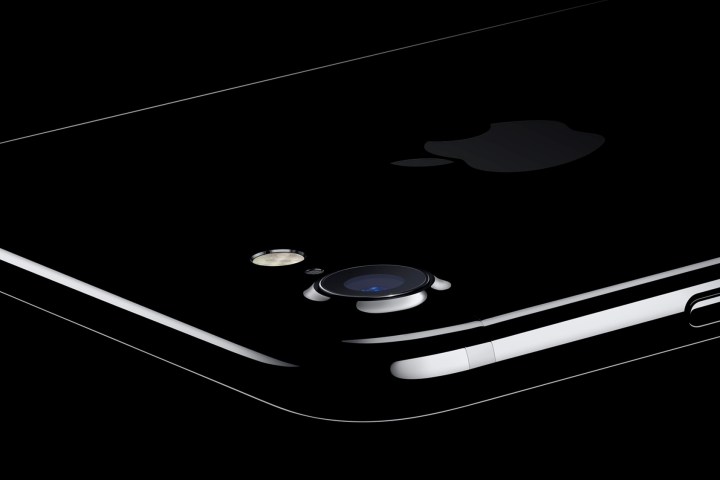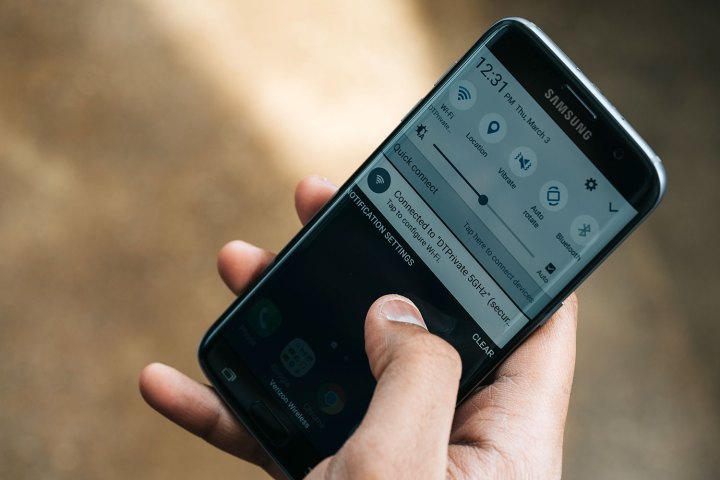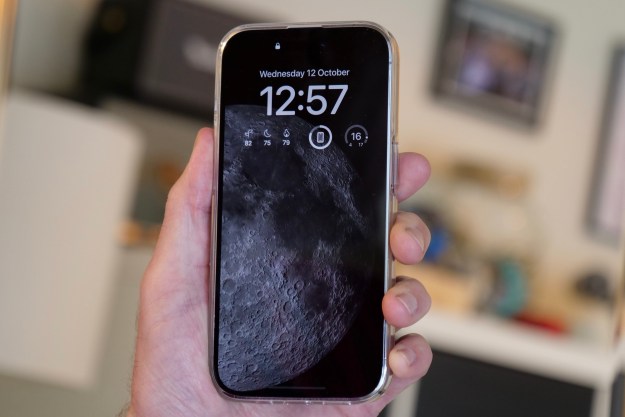It’s a clash not only between smartphones, but between manufacturers. The Galaxy S7 has already beaten the
Specs
| iPhone 7
|
Galaxy S7
|
|
| Size | 138.3 x 67.1 x 7.1 mm (5.44 x 2.64 x 0.28 in) | 142.4 x 69.6 x 7.9 mm (5.61 x 2.74 x 0.31 in) |
| Weight | 4.87 ounces (138 grams) | 5.36 ounces (152 grams) |
| Screen | 4.7-inch Retina HD LED-backlit widescreen | 5.1-inch Quad HD Super AMOLED |
| Resolution | 1,334 x 750 pixels (326 ppi) | 2,560 x 1,440 pixels (577 ppi) |
| OS | iOS 10 | Android 6.0 |
| Storage | 32, 128, 256GB | 32, 64GB |
| MicroSD card slot | No | Yes |
| NFC support | Yes | Yes |
| Processor | A10 Fusion with 64-bit architecture, M10 motion coprocessor | Qualcomm Snapdragon 820/Samsung Exynos 8890 |
| RAM | 2GB | 4GB |
| Connectivity | 4G LTE, GSM, CDMA, HSPA+, 802.11a/b/g/n/ac Wi-Fi | 4G LTE, GSM, HSPA, 802.11a/b/g/n/ac Wi-Fi |
| Camera | 12MP rear, 7MP front | 12MP rear, 5MP front |
| Video | 4K at 30fps, 1080p at 30 or 60fps | |
| Bluetooth | Yes, version 4.2 | Yes, version 4.2 |
| Fingerprint sensor | Touch ID | Yes |
| Other sensors | Barometer, 3-axis gyro, accelerometer, proximity sensor, ambient light sensor | Barometer, gyro, accelerometer, proximity sensor, heart rate monitor |
| Water resistant | Yes, IP67 rated | Yes, IP68 rated |
| Battery | 1960mAh, 14 hours talk time on 3G | 3,000mAh, 22 hours talk time on 3G |
| Ports | Lightning | micro USB, headphone |
| Marketplace | Apple App Store | Google Play Store |
| Color offerings | Gold, rose gold, silver, black, jet black | Black, white, gold, silver, pink gold |
| Availability | AT&T, Verizon, Sprint, T-Mobile | AT&T, Verizon, Sprint, T-Mobile |
| Price | $650 | $695 |
| DT review | 3.5 out of 5 stars | 3.5 out of 5 stars |
It can be a little tricky comparing Apple devices with other phones, largely because of the fact that Apple doesn’t use the same Qualcomm processors that most other major phone makers use, and it’s harder to compare like-for-like apps running on two different operating systems.
Samsung’s Galaxy S7 most commonly has a Snapdragon 820 processor inside, but there are some versions with Samsung’s own Exynos 8890 octa-core chip, which are mostly sold outside the U.S. The quad-core Snapdragon 820 has twice the performance of the Snapdragon 810, and 40x the graphical ability, plus Qualcomm’s Quick Charge 3.0 technology inside for fast battery charging. The A10 Fusion is Apple’s in-house designed chip choice for the
Clever technology sees both chips handle workloads in the most efficient manner, by only utilizing certain cores for particular tasks, minimizing power consumption. The Galaxy S7 has twice the
Turning to benchmarks, the
In the storage department, the
The flexibility provided by a MicroSD card slot isn’t quite enough for the Galaxy S7 to overcome the might of the A10 Fusion chip. It’s impossible to ignore the speed with which it performs, and the fact it’s considerably newer — and will, therefore, remain competitive for longer — than the Snapdragon 820. The Galaxy S7 is fast enough for now, but the
Winner:
Design
Samsung’s Galaxy S7 is gorgeous with its glass back, metallic finish, and aluminum frame. Except it’s still the slightly-less-attractive-sibling to the Galaxy S7 Edge. The
The Galaxy S7 suffers by not being the Galaxy S7 Edge. It’s pretty, but no prettier than the
Fingerprints are a problem for both phones. The Galaxy S7’s glass body gets covered in smears, as does the jet black
Both have camera bumps, both will be expensive to repair if panels or screens crack, and arguments about which one looks better will always end in a stalemate.
Winner: Draw
Audio
The
That’s not the end of the story. Apple has given the
Commit to Apple’s Lightning connector and it may pay off in the future, as features including power for external Digital Analogue Converters are included, but not exploited so far. That’s for the future. Right now, the Galaxy S7’s greater flexibility wins through, despite the
Winner: Samsung Galaxy S7
Display

You’ll gaze lovingly at the Galaxy S7’s 5.1-inch Super AMOLED screen, because it’s bright, colorful, and has contrast levels worthy of top-notch televisions. The 2,560 x 1,440-pixel resolution means your pictures will be full of detail, and you’ll be able to watch the Ultra HD videos shot with the camera at full resolution.
The
There is one thing that the iPhone has over the Galaxy S7 — an alternate input technology, called 3D Touch, which allows you to give different input commands based on how hard you press on the display. Combined with iOS 10 this is a feature that deserves more attention. The shortcuts speed up productivity and add an extra dimension to many apps including iMessage and Photos.
However, the Galaxy S7’s high-resolution AMOLED screen is stunning, and it’s an easy win for Samsung.
Winner: Samsung Galaxy S7
Camera

The iPhone has long been the phone of choice for photographers, but Samsung has seriously stepped up its game in the camera department over the past few years.
The
If you take more selfies, the
The Galaxy S7 amps up the color in its pictures, giving some an almost hyper-real quality, especially with
No matter which you choose, you’re going to capture some awesome pictures you’ll be proud of, so we’re calling this one a draw.
Winner: Draw
Durability

Apple has finally started concentrating on durability for the
Meanwhile, the S7 has an IP rating of IP68, basically meaning that it can handle up to 3 meters of water. It’s more water resistant than the
However, the aluminum back on the iPhone is stronger than the two glass panels on the Galaxy S7, which are much more likely to shatter. That curved glass on the back of the phone will be expensive to replace, too. Sure, the front of your iPhone could break, too — it’s glass — but at least the back should survive more falls than the Galaxy S7. Metal is tougher than glass. Given how often people break the glass on their phones, we think the iPhone is more durable where it really counts.
Winner:
Software

There’s no point in making this an ‘iOS vs Android‘ article, but there are a few things to keep in mind. For example,
That doesn’t mean that
Don’t worry about apps though. Samsung has its own app store, plus you get to download all the apps from Google Play, while the
Take a closer look and there are a few differences to swing a difficult decision in the iPhone’s favor. The first is Siri, Apple’s virtual assistant, which is more helpful than ever in iOS 10. Samsung’s own voice control system can’t keep up, and Google’s Assistant isn’t going to be available on phones other than the Pixel for a long while yet. Secondly, we really like the changes made to iMessage in iOS 10, which makes chatting with iPhone-owning friends a lot of fun.
The iPhone also benefits from regular software updates, potentially immediately fixing security issues should they appear, while Samsung’s situation is complicated by its user interface skin over the top of
We’re going to give this to the iPhone, but with a caveat. If you’re already invested in one ecosystem — whether that’s in experience, apps, or accessories — then it may be cost and time effective to stay with what you know. Otherwise, it’s a close call, but until Samsung sorts out its security patches and provides timely
Winner:
Battery
This one goes to the Galaxy S7, and for more reason than one. First of all, the device has a much higher battery capacity, sitting at a cool 3,000mAh, compared to the iPhone’s 1,960mAh capacity. That’s almost double the amount of battery capacity, but both devices last about a day on a charge, due to the Galaxy S7’s battery having to power a larger, higher resolution screen.
Beyond battery capacity, the Galaxy S7 has other advantages. For example, it offers quick charging, a technology that Apple has long refused to incorporate into the iPhone. It also offers wireless charging, yet another technology that’s overdue on the iPhone.
With a much larger capacity, the ability to charge that battery up again quickly, and wireless charging, Samsung is the clear winner here.
Winner: Galaxy S7
Price and availability

Both phones are available right now on all four major carriers in the U.S., and can be purchased globally through networks and without a contract. Whichever you decide to buy, it won’t take long to find one for sale.
The
The Samsung Galaxy S7 is the pricier option if you choose to buy it through a carrier, but some deals can be found through retailers selling unlocked versions that bring it closer to the iPhone’s $650 base cost. Both phones remain desirable too, so reselling either when it’s time to upgrade won’t be difficult.
| iPhone 7 | Galaxy S7 | |
| AT&T | $650 or $21.67 per month for 30 months | $695 or $23.17 per month for 30 months |
| Sprint | $650 or $27.09 per month for 24 months | $650 or $27.09 per month for 24 months |
| T-Mobile | $650 or $27.09 per month for 24 months | $680 or $28.34 per month for 24 months |
| Verizon | $650 or $27.08 per month for 24 months | $672 or $28.00 per month for 24 months |
The price difference between the two phones is negligible, and if you’re willing to spend $650 on a phone, then another $30 isn’t going to sway many decisions. Both are easy to find for sale, wherever you are in the world.
Winner: Draw
Overall winner: Draw
Both the
Tie-breaker: Accessories

There are many chargers, cases, docks, and cables available for both the iPhone and the Galaxy S7. Both are probably the best catered for smartphones by third-party manufacturers, so the choice is wide.
However, Samsung has an ace up its sleeve here: Gear VR. It’s the best mobile virtual reality headset you can buy. It’s designed and supported by Oculus, there is a great choice of apps and games, and it’s cheap. What it does is add value to your phone. No, it’s probably not something you’ll use everyday, but when you do want some VR fun, Gear VR and a Galaxy S7 provide a far superior experience than a universal headset and a third-party app will on the iPhone.
The reason this is a tie-breaker and not a main category? A whole lot of people don’t care about VR, and it’s the phone that you’ll be using all the time. However, if you really can’t decide between the two — and we think that decision should be made based on whether you’re already invested in either operating system — then the fun provided by Gear VR could be taken into consideration.
Winner: Galaxy S7
Editors' Recommendations
- Best refurbished iPhone deals: Get an iPhone 14 for $513
- Best Verizon new customer deals: Galaxy S24, iPhone and more
- An Apple insider just revealed how iOS 18’s AI features will work
- iPhone 16: news, rumored price, release date, and more
- iPhone SE 4: news, rumored price, release date, and more







